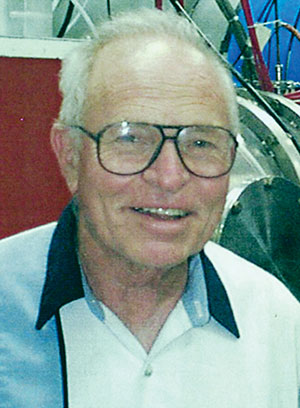Norman Rostoker
DOI: 10.1063/PT.3.2891
Norman Rostoker, a nuclear fusion innovator and, in his words, “somewhat a renegade” advocate of research independent of the US Department of Energy, died on 25 December 2014 in Irvine, California. At the time of his death, Tri Alpha Energy, the company he cofounded to advance work in field-reversed magnetic containment methods, was building its third-generation machine.

Norman Rostoker
AIP ESVA, GIFT OF NORMAN ROSTOKER

Born on 16 August 1925 in Toronto, Rostoker went to the University of Toronto, where he earned a BA in science in 1946 and a master’s degree in 1947. After receiving a DSc in physics from the Carnegie Institute of Technology in 1950, he worked there as a research physicist until 1953. His 1950 work on electrical resistivity of Earth, based on the Green function method, had widespread impact. Modern petroleum prospecting with low-frequency electromagnetic waves uses and expands on the physics in Rostoker’s work, and his Green function method was used in his later solid-state theory and in the foundation of plasma theory.
In 1954 Rostoker added to what is now known as the Korringa-Kohn-Rostoker approximation, a Green function method still widely used in calculating the electronic band structure in solids. He broke ground on theories of the statistical mechanics of particles with Coulomb interactions and on the treatment of inhomogeneities, fluctuations, and cyclotron-radius effects in plasmas. Rostoker built on his solid-state work by translating the test-particle method into plasma physics, whereby a gas of charged particles is viewed as a group of “dressed” particles in which each one has its own shielding cloud. The concept simplifies basic property calculations and especially the particle-in-cell simulation approach.
That foray into plasma physics led Rostoker into the practical side of plasma fusion research. He worked at the Armour Research Foundation and General Atomics before becoming a professor of physics at the University of California (UC), San Diego, in 1962. Starting in 1967 he was IBM Professor of Engineering at Cornell University, and in 1972 he joined the faculty at UC Irvine. He served as chair of the physics and astronomy department from 1973 to 1976.
Rostoker believed that clean fusion should be an almost limitless, non- polluting energy source. Once he had developed the theoretical foundation, he began working to make the technology a reality. He had a gift for being able to apply theory to develop innovative fusion reactor technology.
Among the first generation of fusion energy trailblazers, Rostoker saw early on the simplicity of field-reversed magnetic confinement geometries. Magnetic “bottles” are effective if the field lines do not penetrate solid surfaces but instead bend and close on themselves. Tokamaks implement the confining field in a toroidal chamber but require a current inside the plasma to give the field a helical twist. In field-reversed configurations, field lines are closed, so they provide good confinement, but the chamber is cylindrical, so it is easy to construct and maintain. The anomalous transport characteristic of tokamaks can be avoided, and a compact reactor design becomes viable.
At Cornell and UC Irvine, Rostoker pursued the use of collective fields to accelerate ions in plasma. That work inspired a generation of students, some of whom went on to develop innovative plasma acceleration methods. Rostoker meanwhile combined accelerator physics with the plasma physics of a field-reversed geometry for use in a fusion reactor; in that alone he held 27 US patents. His laboratory team focused on devising new approaches to the central fusion problems and was able to translate theory into hardware.
Fusion demands extremely high energy ions. In his most significant insight, Rostoker proposed that high-energy, large-orbit particles, such as those in accelerators, can “ride over” disruptive plasma turbulence and average their effects to nearly zero. With that approach, now known as Norman’s conjecture, researchers can thus get around plasma instabilities that interfere with other designs. Rostoker also wanted to use the boron–proton fusion reaction to devise a fusion reactor whose surrounding structure is not degraded by neutron capture. In 1998 Rostoker and his group at UC Irvine spun off Tri Alpha Energy to carry the efforts further. Unable to gain enough funding from the Department of Energy, Rostoker thereafter kept the company independently funded. He instituted a chair in applied physics in 2012 at UC Irvine.
Rostoker was boundlessly resourceful in his humor and was able to soften even the most sullen of people at the tensest of times. He also showed unlimited generosity to his students, whom he attracted to UC Irvine from around the world. He personally picked up one of us (Tajima), fresh from Japan, at the John Wayne Airport in September 1973.
More about the Authors
Gregory Benford. University of California, Irvine.
Toshiki Tajima. University of California, Irvine.
